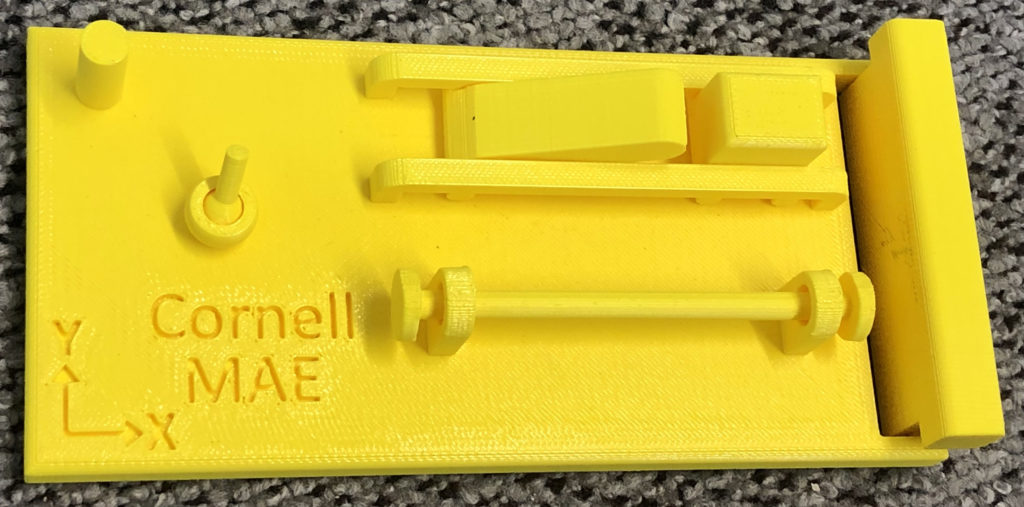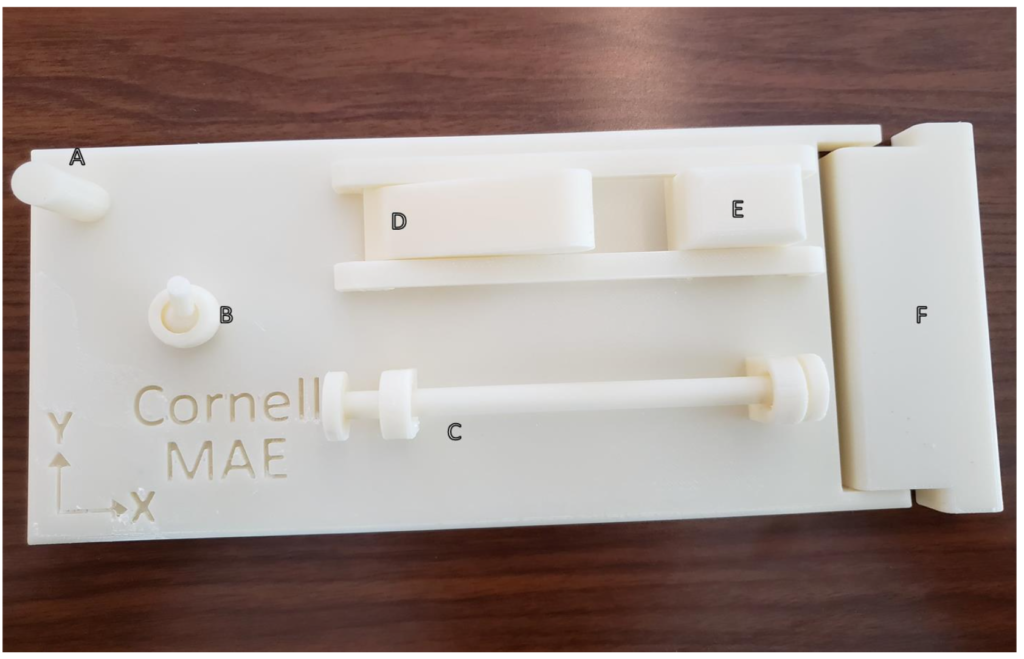
Overview
This is a 3D printed tool we give to our Statics students when they’re learning about reactions from different 2D and 3D supports. CU REACT stands for Cornell University Reaction Exploration Analysis and Calculation Tool.
Principle
CU REACT has a coordinate system printed on it and 6 different supports attached, including both 3D and 2D (confined to rails) type supports. This enables discussions about which force and moment reactions are generated by each support type. The coordinate system allows the class to talk specifically about x, y, or z components of the force and moment reactions.
What you need
We use the STL file to print a larger size for course instructors to use (often in conjunction with a document camera during class) and we also print a smaller individual size for every student in the class. We’re able to provide these to each student out of department lab funds, at no cost to the students.
How it’s done
Each student gets a CU REACT during TA-led discussion sections the week we begin talking about support reactions. We use the attached worksheet to have students manipulate the tool individually and decide which reactions are possible for each support, then come together as a class to discuss their findings.
Common discussion points

- A: Fixed support. No common issues.
- B: Ball and socket. Students say that if you move the “joystick” far enough, it eventually touches the socket and therefore prevents further rotation (moment reaction). We explain that the assumptions are only good for small displacements, and for small displacements from center, the joint can’t prevent rotation.
- C: Shaft bearings. This element usually instigates a lot of discussion. We treat both bearings together as a single support that only allows one degree of freedom. Students ask about axial translation and we explain what a thrust bearing is. This object could be modified to create a thrust bearing: a small stopper could be printed just beyond the end cap on one end of the shaft to prevent axial translation.
- D: Roller pin (2D). This is meant to be considered in a 2D context. Students ask about out of plane motions and we ask them to ignore those for this object.
- E: Cart (2D). Same as for D.
- F: Hinge. Often some discussion of the different between C and F.
